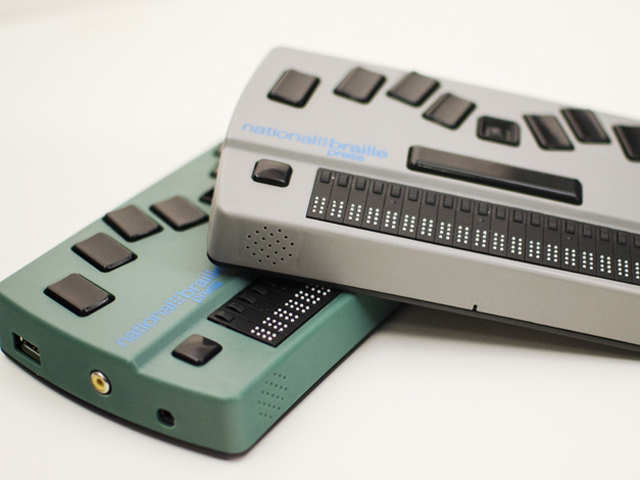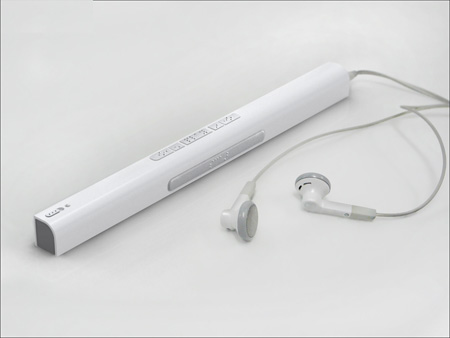Wearable Technology for Low Vision: Making Everyday Tasks Easier
Wearable Technology for Low Vision: Making Everyday Tasks Easier
Blog Article
Enhancing Lives With Advanced Assistive Instruments for the Blind
The integration of sophisticated assistive tools for the blind is transforming exactly how individuals experience their surroundings and interact with their communities. What does this evolution suggest for the future of assistive innovation and its duty in empowering individuals?
Introduction of Assistive Gadgets
Assistive devices for the blind include a diverse variety of devices and innovations made to boost independence and enhance the quality of life for individuals with aesthetic impairments. These tools accommodate various demands, from navigation and movement to interaction and day-to-day task monitoring.
One of the primary groups of assistive devices consists of mobility help, such as white canes and overview pet dogs, which aid customers navigate their surroundings securely. Digital traveling aids, furnished with sensors and audio feedback, likewise play a significant function in flexibility improvement.
Additionally, tools that aid with day-to-day living tasks, such as flexible kitchen tools, Braille labels, and chatting watches, encourage individuals to execute tasks individually. Interaction aids, including screen readers and Braille display screens, facilitate access to info and enable individuals to engage properly with the electronic world.
Moreover, low-tech options like amplifying glasses and large-print products remain essential for lots of individuals. Collectively, these assistive gadgets offer not only as practical tools however likewise as essential enablers of freedom, fostering greater engagement in a world that usually prioritizes sighted experiences. Their combination into every day life is essential for advertising inclusivity and enhancing total wellness for those with aesthetic impairments.
Innovative Technologies in Use
Innovation in innovation has substantially changed the landscape of devices readily available for people with visual problems. Among the most notable innovations are smart glasses integrated with enhanced reality, which give real-time navigating aid and object recognition. These gadgets take advantage of progressed cameras and man-made intelligence to provide auditory cues, enhancing the individual's spatial understanding and freedom.
In addition, mobile applications have actually emerged as effective sources, allowing users to determine money, read message aloud, and browse strange atmospheres through spoken directions. Devices such as Braille displays and refreshable Braille tools remain to progress, providing smooth connection with computer systems and mobile phones, thereby boosting communication and accessibility to information.
Wearable innovation, including smartwatches outfitted with voice-activated functions, better equips customers by assisting in quick accessibility to notifications and informs without needing aesthetic interaction. Tactile maps and 3D printing are additionally obtaining grip, providing substantial depictions of rooms that help in alignment and wheelchair training.
Jointly, these ingenious modern technologies not just improve the day-to-days live of aesthetically damaged individuals however likewise foster better independence, inclusivity, and involvement with the more comprehensive community, thereby reshaping understandings of availability. (Screen readers for the blind)
Individual Stories of Empowerment
Empowerment commonly emerges from personal experiences that highlight the transformative impact of modern technology on individuals with visual problems. Take, as an example, the story of Sarah, a young musician that regained her passion for painting through making use of a clever walking cane equipped with obstacle detection. This gadget not only facilitated her movement but instilled a newfound self-confidence, allowing her to navigate public rooms independently and seek her creative ventures.

These narratives underscore the profound impacts that progressed assistive gadgets can carry day-to-day live. By enabling people to conquer obstacles, modern technology promotes a feeling of autonomy and self-worth. Such empowerment tales function as a testimony to the capacity of advancement, highlighting how the right tools can substantially enhance lifestyle and open doors to brand-new opportunities for those with visual problems.
Advantages of Advanced Solutions
Just how can advanced services fundamentally enhance the lives of individuals with visual problems? The assimilation of innovative technology into assistive gadgets significantly transforms everyday experiences for those influenced by vision loss. These innovative options use extraordinary freedom, making it possible for customers to navigate their atmospheres with confidence. Tools such as wise walking sticks geared up with sensors, navigating applications, and wearable modern technology are made to offer real-time comments, improving spatial awareness and reducing the dangers connected with movement.
In addition, advanced assistive innovations foster social incorporation by helping with communication and communication. Voice-activated devices and apps enable people to access details and engage with their surroundings separately, breaking barriers that previously hindered their involvement in academic, specialist, and social setups.
Furthermore, the personalization and versatility of these remedies accommodate the diverse requirements of users, consequently enhancing their overall lifestyle. Enhanced functionality, such as item acknowledgment and text-to-speech capacities, encourages people with visual problems to execute tasks that they may have as soon as located testing. Eventually, advanced assistive modern technologies not only enhance freedom and safety but also promote dignity and self-worth, permitting users to lead meeting lives.
Future Patterns in Assistive Technology
As modern technology remains local optometrist to progress, the landscape of assistive devices for the blind is poised for amazing innovations that will certainly further improve access and freedom. Emerging fads original site in assistive technology suggest a change towards boosted combination of man-made intelligence (AI) and machine discovering, making it possible for devices to adjust to individual customer needs in real-time. These technologies are anticipated to help with even more instinctive navigating systems that can identify barriers and supply audio comments, considerably boosting outside wheelchair.
Furthermore, the growth of wearable tech, such as clever glasses geared up with enhanced fact, will enable individuals to get contextual information about their surroundings, therefore enriching their spatial recognition. Developments in haptic innovation guarantee to develop responsive responses devices, permitting customers to regard info with touch, boosting knowing and interaction with their setting.
Telecommunication advancements are likewise leading the way for remote assistance solutions, where trained experts can give advice via video phone calls, making certain support is readily easily accessible. As these trends unravel, the future of assistive devices for the blind will undoubtedly promote better freedom, empowering individuals to navigate their world with confidence and simplicity.

Conclusion
The combination of advanced assistive tools for the blind represents a significant innovation in fostering independence and boosting lifestyle. By using cutting-edge innovations, these tools encourage individuals to browse their atmospheres with better confidence and freedom. As the field proceeds to evolve, ongoing research study and growth will likely yield also a lot more sophisticated solutions, additionally changing the lived experiences of people with aesthetic problems and promoting a higher sense of inclusion within society.
The combination of innovative assistive tools for the additional resources blind is changing just how people experience their environments and engage with their areas. The combination of innovative technology right into assistive tools dramatically changes everyday experiences for those impacted by vision loss.As innovation continues to progress, the landscape of assistive devices for the blind is poised for impressive innovations that will certainly better improve availability and self-reliance. Arising patterns in assistive innovation show a change toward raised combination of synthetic knowledge (AI) and device knowing, allowing devices to adapt to individual customer requires in real-time.The integration of advanced assistive tools for the blind represents a significant improvement in promoting self-reliance and boosting high quality of life.
Report this page